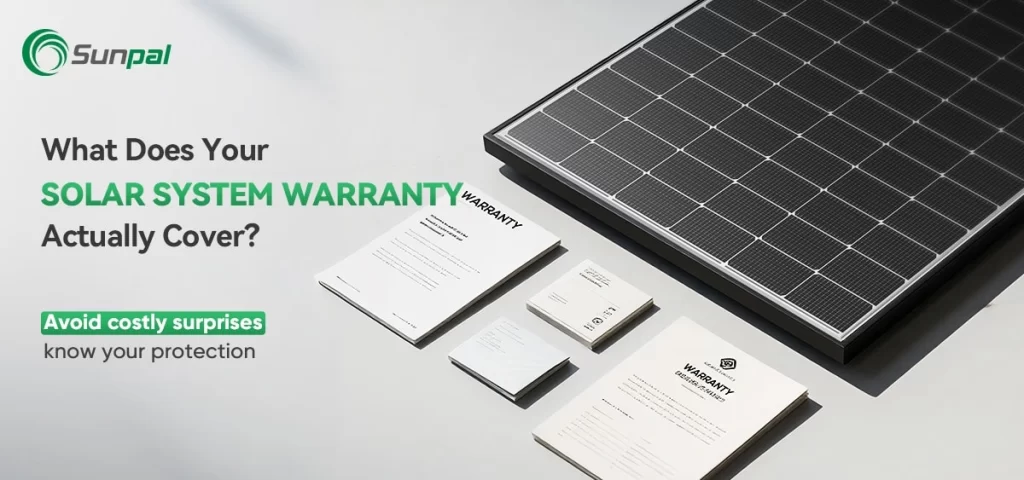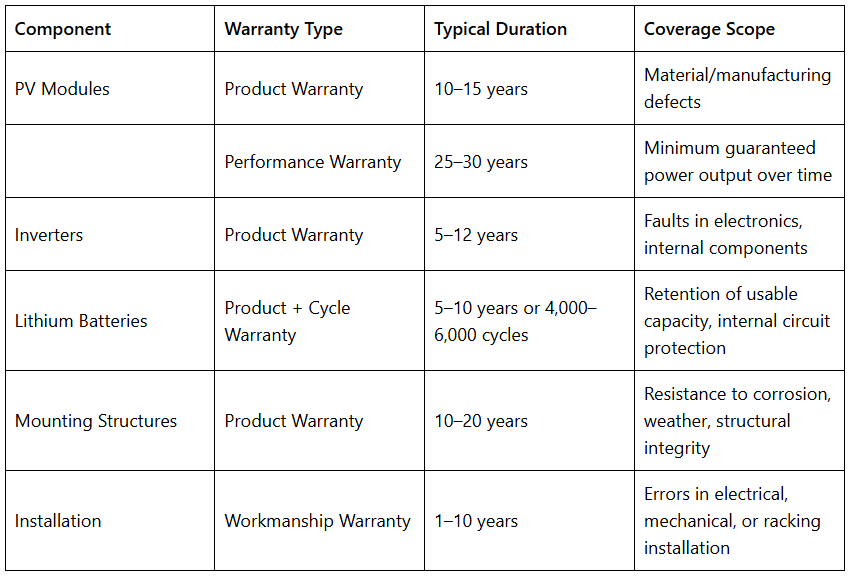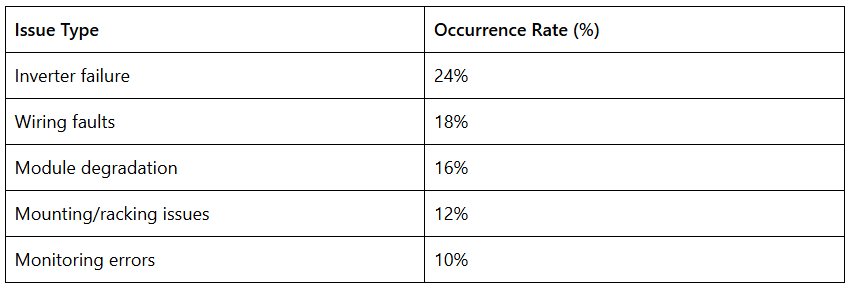
What happens when your solar system underperforms—but the warranty doesn't cover it? For many commercial and industrial system owners, this scenario is more common than expected. Despite investing in high-performance photovoltaic (PV) systems, critical warranty terms are often misunderstood—leading to costly service gaps, unexpected repair expenses, and risk to long-term return on investment. This article examines the types of solar warranties available, what they truly cover, where gaps occur, and how businesses can ensure better protection throughout the system lifecycle.
Warranty Gaps Are Emerging as a Financial Risk in Solar Projects
According to the 2025 Solar Asset Owner Trends Report by PV Tech Research, 36% of solar project owners faced issues not covered by their warranties—most commonly related to inverter failure, early panel degradation, or workmanship faults.
In financed or power purchase agreement (PPA)-based systems, these gaps can impact revenue projections and increase O&M costs. Many owners don't discover what's excluded until a critical component fails—and service costs fall outside the warranty scope.
Breakdown of Solar Warranty Types and Coverage Durations
Each component of a solar system comes with different warranty coverage. The modules, inverter, battery, structure, and installation are typically covered by different parties under separate terms.
Table 1: Common Solar Warranty Types and Coverage Durations

Key Note: The mismatch between module (30-year performance) and inverter (5–10-year product) warranties often leads to lifecycle replacement costs that are not fully covered.
Linear vs Tiered Performance Warranties: What's the Difference?
Solar panel degradation is expected, but how it's covered varies.
Most top-tier manufacturers now offer linear performance warranties, ensuring energy output declines at a predictable rate—typically no more than 0.55% annually after the first year.
In contrast, tiered warranties allow a significant drop in the first year (often 2.5–3%), followed by a fixed rate (e.g., 0.7%) thereafter, resulting in more energy loss over time.
Chart 1: Energy Output Comparison – Linear vs Tiered Warranty Models

Impact: Over 30 years, a tiered model may deliver up to 6.3% less energy, directly reducing returns in long-term projects.
What's Not Covered: Key Exclusions in Solar Warranties
Solar warranties often contain exclusions that can catch owners off guard:
- Damage from extreme weather (hail, lightning, flooding)
- Theft, vandalism, or rodent damage
- Improper installation or use
- Lack of maintenance or cleaning
- Operation outside temperature or voltage ranges
- Replacement labor and freight (unless included in service agreements)
In many cases, warranties are voided if systems are altered, moved, or serviced by non-certified personnel.
Why Workmanship Warranties Matter More Than You Think
Component reliability is only part of the equation—poor installation can lead to early system failures. Workmanship warranties protect against:
- Faulty wiring or cabling
- Incorrect racking alignment
- Inadequate grounding or sealing
- Loose inverter or combiner connections
Unfortunately, installation warranties are typically the shortest—often 1 to 5 years—despite the fact that many system issues arise within the first 36 months.
Chart 2: Leading Causes of Early Solar System Failures (2025 Survey Data)

Insight: Over 40% of failures are installation-related—yet not covered by standard product warranties.
Industry Shift: Toward Integrated, Extended Warranty Models
To minimize fragmentation and improve accountability, more EPCs and manufacturers are offering combined warranty solutions:
- 20-year inverter and battery extensions
- Labor-inclusive packages
- Remote monitoring with automatic fault detection
- Single-point warranty management
These are increasingly bundled into full-scope engineering, procurement, and construction (EPC) contracts or added as premium operation & maintenance (O&M) offerings—especially in C&I and utility-scale markets.
Sunpal Energy's Warranty Commitment
As a global solar system provider, Sunpal Energy delivers dependable, long-term protection with:
- 15-year product warranties on solar modules
- 30-year linear performance warranties (max 0.55% annual degradation)
- 10-year inverter warranties, extendable up to 15 years
- Lithium battery coverage up to 6,000 cycles
- Certified installer network for consistent workmanship quality
- Responsive after-sales support for all warranty inquiries
All warranty terms are clearly documented to support project developers, EPCs, and system owners through the entire asset lifecycle.
Conclusion
Warranties are not just fine print—they're financial safeguards for your solar investment. Knowing exactly what's covered, and what isn't, protects against unnecessary risk and improves project bankability.
For detailed warranty terms or to request a custom solar solution, contact Sunpal Energy today.
Frequently Asked Questions (FAQ)
1. What's the difference between a product warranty and a performance warranty?
A product warranty covers material or manufacturing defects under normal use, typically lasting 10–15 years for solar modules. A performance warranty guarantees a minimum power output over time—commonly 84–85% at 25 to 30 years. These are separate warranties, each serving different aspects of system reliability.
2. Are labor and shipping costs included in most solar warranties?
Not always. While some premium warranty packages may include labor and shipping for replacements, many standard warranties do not. Customers should confirm coverage terms before procurement. Sunpal Energy offers transparent warranty documentation and optional extended service solutions when requested.
3. Does replacing a component void the existing warranty?
Replacing a component using unauthorized technicians or non-original parts can void the warranty. However, if the work is performed by a certified installer using approved components, the original warranty often remains valid. Sunpal recommends using authorized personnel for any replacements to preserve warranty protection.
4. How can I check if my system is still under warranty?
Warranty coverage can be verified by referring to the original purchase documents, product serial numbers, and installation records. For assistance, customers may contact Sunpal Energy's service team directly. We can help confirm warranty terms and provide relevant documents upon request.
5. Can solar warranties be transferred to a new system owner?
In most cases, yes—if transfer conditions are met. Some warranties allow transfer during property ownership changes, provided that proper documentation (such as the original invoice and installation records) is submitted. Sunpal Energy supports warranty transfers when formally requested by the new system owner.
